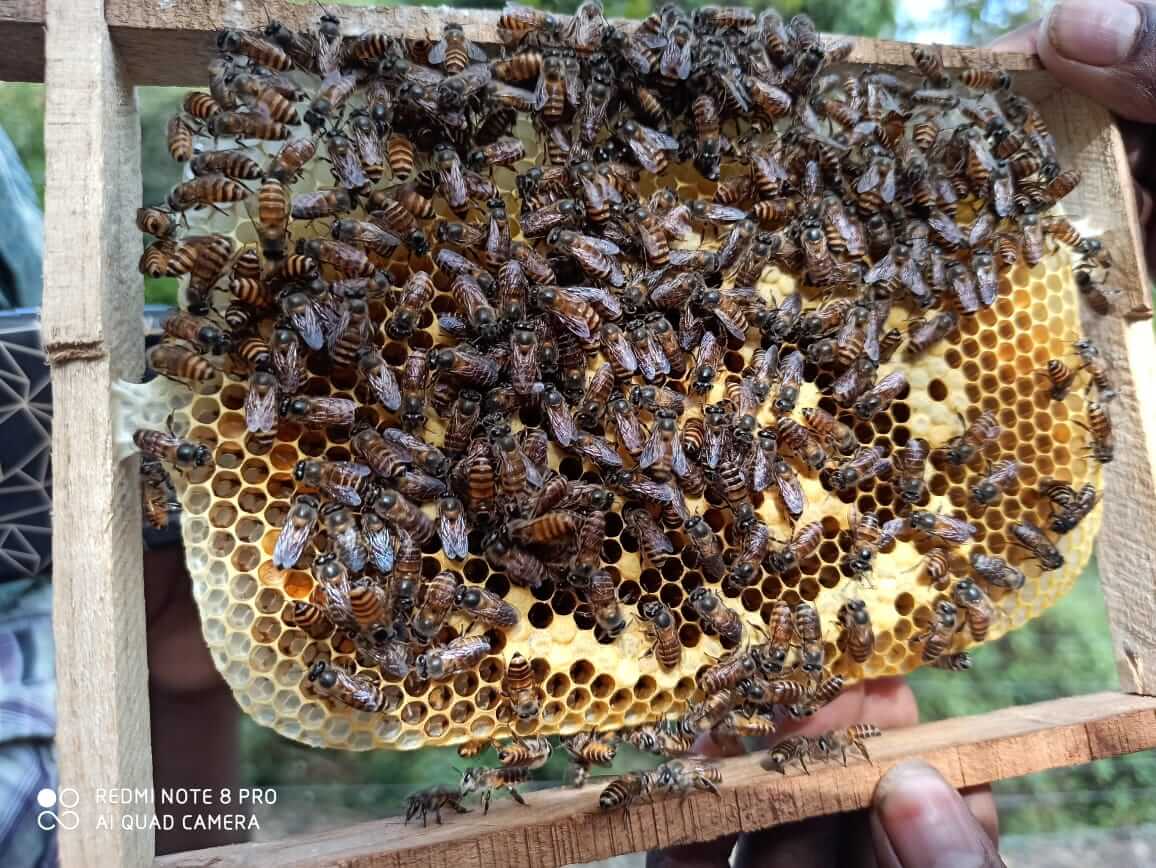Updated on 20 July 2021
Any basic biology textbook will teach you that bees, being key crop pollinators, are crucial for a region’s biodiversity. Pollinators contribute to over one-third of the crop production in the world. Unfortunately, a combination of factors ― like the increase in pathogens and parasites, lesser floral resources for feeding, and an ever-growing exposure to chemical pesticides and fertilizers from intensified agricultural practices ― bee populations are declining rapidly in India. Evidence has shown that changes in land use and the loss of habitat can alter nesting and floral resources, thereby affecting the community composition and behaviour of bees.
Bees in the Nilgiris: In Danger
Over the last two decades, there has been a decline of over 40% in the honeybee population in India. The Western Ghats of India, a biodiversity hotspot, has undergone fragmentation of forests due to land-use change, incurring severe loss in biodiversity. This has resulted in forests and agricultural farms forming a complex bond in terms of pollination services. Despite fragmentation, evidence suggests that those natural ecosystems still play an important role in bee pollination services.
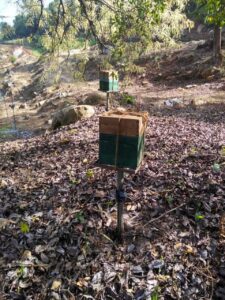
The diversity and number of pollinators within crops increases when farmlands are nearby forests or semi-natural sites. A variety of invertebrates ― social and solitary bees, butterflies, moths, wasps, flies, ants and thrips ― forage within forests and farms and contribute to agricultural productivity by providing a wide range of ecosystem services such as pollination, pest control, nutrient recycling and seed dispersal. A 2020 study published by the Keystone Foundation found that there is a decline in the total number of pollinator species when the distance from the farm to the forest edge increases.
The kind of farming in use also plays a huge role in pollination services. Diversified organic farming systems support greater plant species diversity as they do not involve the usage of synthetic herbicides and insecticides as compared to monoculture-based conventional systems. These agro-ecosystems support a greater richness of pollinator species, birds, and bats, as well as pest-regulating insects like wasps, flies, ants and beetles, all of which provides greater ecological services to humans―specifically farmers.
The Buzz So Far
The Nilgiri Biosphere Reserve is the oldest Biosphere Reserve in India and falls within the Western Ghats. This bio-diverse landscape is also home to several indigenous communities who have lived in and around forests for years, forming deep cultural connections with the ecosystem.
Bees are one such species that are rooted in the socio-economic lives of the Kurumbas, Irulas and Todas. These indigenous communities harvest honey using traditional methods; communities from the lower elevations―Irulas and Kurumbas―harvest honey from Apis dorsata (Giant honey bee) combs that are found on tree trunks and cliffs.
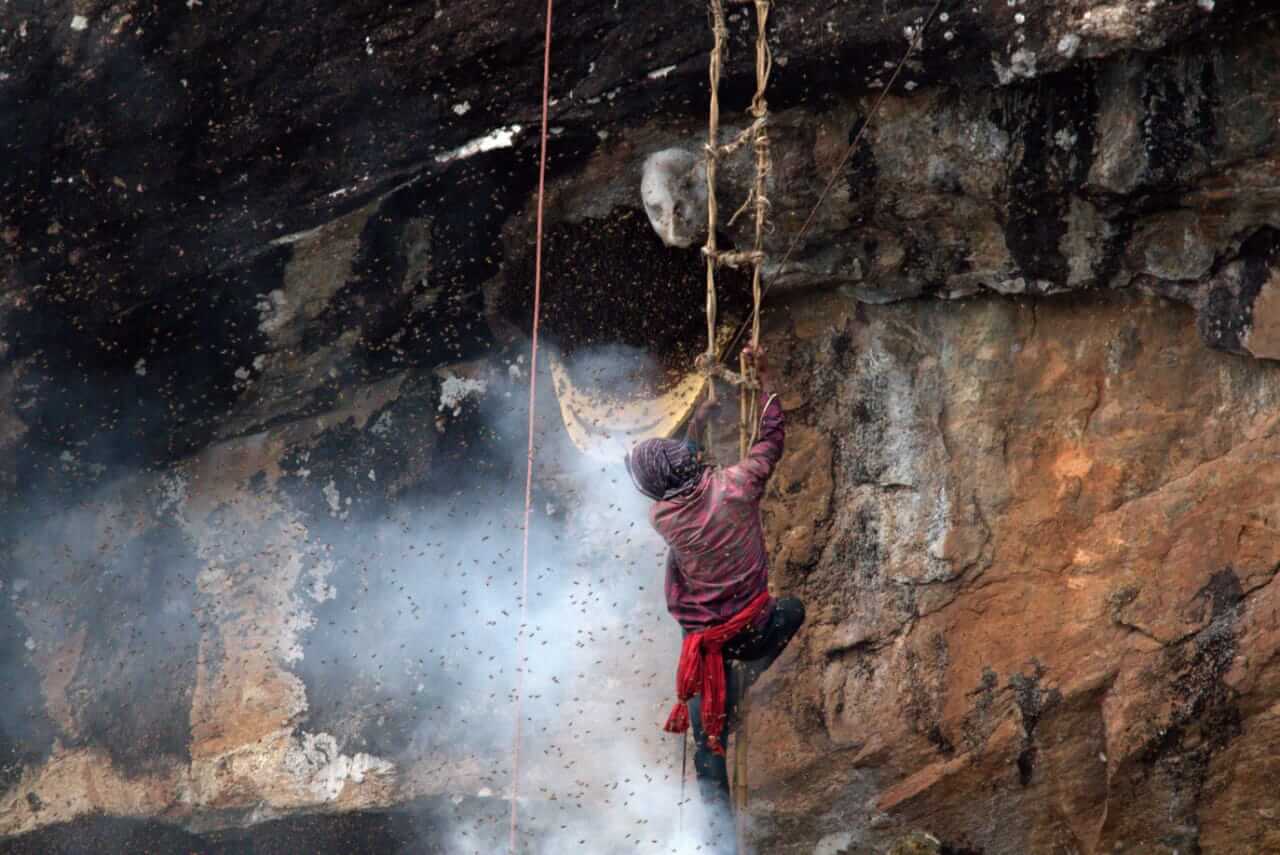
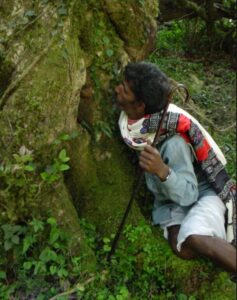
The Todas, who live at higher altitudes, harvest honey from Apis cerana indica (Asian honey bee), from the trunks of trees. They follow a unique system wherein each family is said to have traditional rights over a tree. Honey is harvested in an ecologically safe manner, taking care not to destroy the brood portion of the hive. Very rarely are irritants such as smoke used. Instead, they blow gently inside the hollow of the tree cavity (pictured right). Not only do the Todas make sure that hives continue to grow for future generations, but they also ensure the protection of old shola trees and their habitat.
In recent times, however, the reduction of forest cover, government restrictions and climate change has made the collection of wild honey more and more challenging―pushing for an alternative like bee-keeping. Unlike honey hunting, bee-keeping is when humans create an altered environment for hives to form and thrive in. Honey hunting, on the other hand, is when skilled communities traditionally harvest honey from hives that are already present in the wild.
These indigenous communities, particularly the Irulas and Kurumbas, have adapted to the changing ecology around them. They face fewer challenges to bee-keeping as their traditional agricultural practices are chemical-free ― which, in effect, is pollinator-friendly farming. Additionally, their historic relationship with bees and observational skills of natural phenomena such as seasonal bee migration has helped their understanding of bee-keeping. They are willing to maintain bee boxes with the larger goal of increasing and sustaining the bee population.
“Indigenous communities [here] do not only focus on harvesting honey from the boxes. When the bees migrate to a suitable location, they observe it and see if it is possible to harvest honey there. They are more keen on increasing the bee population, rather than harvesting honey,” says Shanmuganathan, a bee-keeping expert from Kil Kotagiri.
Farming and Bee-keeping: The Shift to Organic
The Nilgiris district administration is actively encouraging organic agriculture through a variety of incentives―technical training on vermicomposting, providing bio-inputs as alternatives to chemical inputs, organic scope certifications, etc. However, not all farming communities in the Nilgiris are able to follow organic practices. Kookalthorai is one area that is still struggling to make the shift. Because of its suitable climatic conditions and the availability of water, this is one of the most prominent agricultural belts in the Nilgiri district. Earlier, local varieties of legumes such as kidney beans were grown, requiring little or no chemical inputs; however, in the last few decades, there has been a shift to hybrid foreign crop varieties like broccoli, lettuce, carrots, beetroot, zucchini, etc. This entails chemical-intensive monoculture, which adversely affects the soil and water quality. In order for the shift to organic practices to be profitable in the long run, the soil must be left to regain its fertility in a natural way. Most farmers cannot afford this incubation period, as they are already repaying debts.
But how does the type of farming being practised affect bee-keeping?
“Pesticides or insecticides are highly toxic to the bees that forage on plants, flowers, or crops in that particular area. These harmful chemicals eventually kill the bees. While foraging for nectar, the ones that survive carry residues back to their hive, which affects young larvae and other bees which weren’t exposed to the chemicals in the air,” says Justin Raj, a bee-keeping expert at Keystone Foundation. Bees are known to leave a scent that helps them find their way back to their boxes. Chemical inputs disorient them, sometimes making them unconscious.
While bee-keeping is a challenging task in areas like Kookalthorai, there are a few farmers who have been persistent in trying. One such farmer, Chandrasekar, has been practising bee-keeping for two years since converting to practising organic agriculture. However, the bees he received through the government scheme have all “absconded”. “These bees were brought from the plains. Perhaps they did not survive because they could not adapt to the lower temperatures and higher elevations in Kookalthorai,” he says.
Because of Chandrasekar’s interest and perseverance, he was able to get a bee colony from the wild and create suitable conditions for them through experimentation. With the field near his farm beginning to use chemicals, he plans to plant border crops like papaya to protect his bees. “Border crops keep pests such as flying insects from attacking crops, as well as preventing the chemical inputs being sprayed in surrounding farms from entering my farm,” he says. Across one acre, Chandrasekar has separated the four boxes by 20 feet so that they do not get destroyed by ants.
Similarly, Manoj, another farmer from Kookalthorai, recently approached Keystone Foundation for support to set up bee boxes on his farm. He has about ten acres that border the reserve forests; he follows an agroforestry model of farming wherein trees and shrubs are grown alongside crops. This diversified organic farming system, coupled with the boundary shared with the reserve forest, is an ideal space for bee-keeping as there is ample forage ground for the bees.
I first heard about the bee-keeping support offered by the government at one of the farmer group meetings. But it was just an announcement, and no proper details were given, so I lost interest as I had no idea what to do regarding bee-keeping.
“Through the introductory training given by Keystone Foundation, I was able to understand how beneficial bee-keeping can be to farming,” says Manoj. For now, he has five bee boxes out of which only two colonies are still there. “Bee-keeping requires a lot of care on the part of the bee-keeper. When new colonies are brought and kept, they need to be monitored regularly to see if the eggs, larvae and pupae are there. The boxes need to be cleaned and sugar syrup needs to be given regularly,” says Justin Raj.
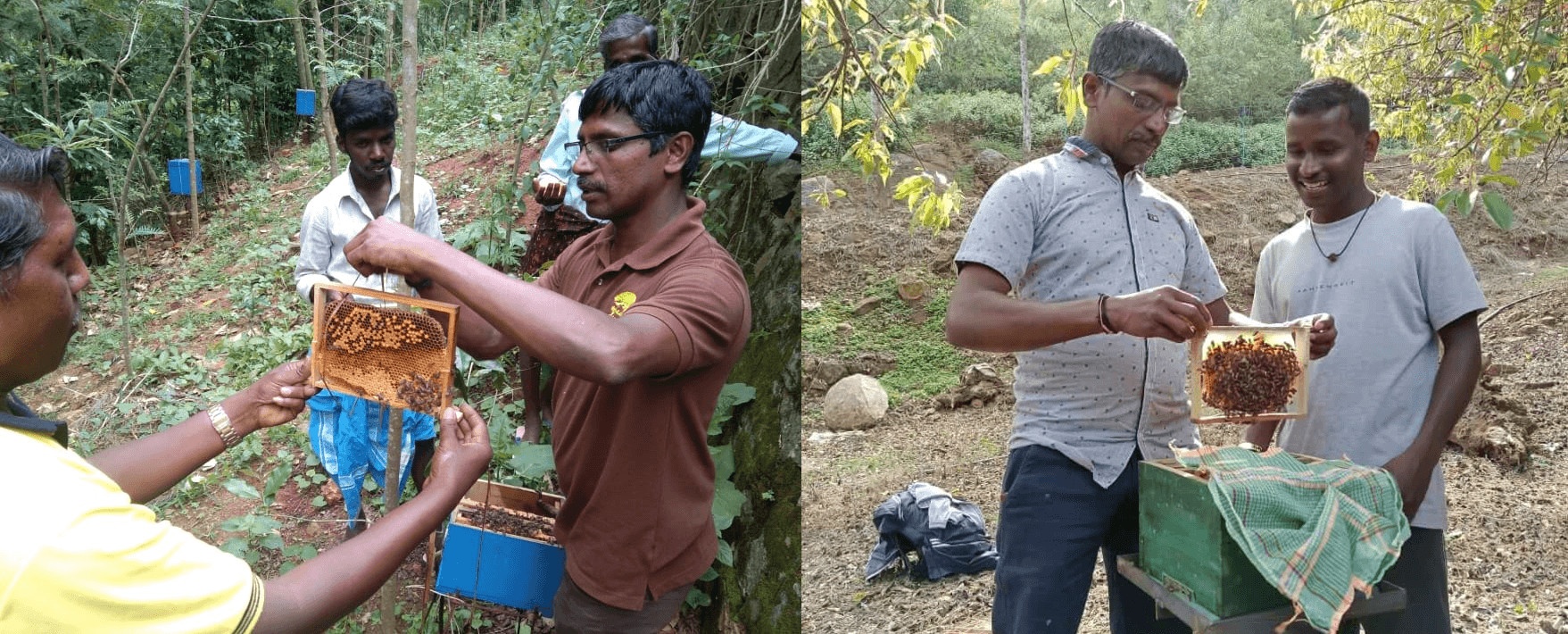
“Only when bee boxes are maintained properly will the survival rate increase,” Justin adds. Still, it is only through experimentation in a challenging area like Kookalthorai that farmers and bee-keepers can understand what will work and what will not.
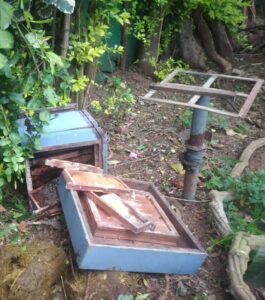
Throughout the year, there are aggressive instances of human-elephant conflict in Kookalthorai, which has seriously damaged farmers’ crops. Bee-keeping offers some hope for stability. What started as an experiment in parts of Africa is being replicated in India; bee boxes are being used as fences for keeping elephants away! The pheromones and the low-frequency buzz of bees act as a natural deterrent. Not only is this a humane solution to address conflict, but it also helps farmers increase their crop yield through pollination while receiving additional income by harvesting honey. Even so, farmers in Kookalthorai need to convert to organic farming before they can think of beekeeping as an alternative livelihood and solution to elephant conflict.
Policies at Play
Multiple departments deal with different aspects of bee-keeping at the national level. However, the Ministry of Agriculture and Farmers Welfare has a National Bee Board (NBB) which has the primary role of building capacities of bee-keepers through training as well as setting up centres to enhance scientific bee-keeping. Under the 2020 Atma Nirbhar Bharat Krishi Package, ₹500 crores were announced for the National Beekeeping and Honey Mission. Staff from the Agricultural Technology Management Agency (ATMA) are sent to state horticulture departments to conduct capacity building training for women and farmer groups and facilitate exposure visits.
In the Nilgiri district, support for bee-keeping is subsidized annually by the Mission for Integrated Development of Horticulture (MIDH) scheme under the National Horticulture Mission (NHM). Under this scheme, a farmer pays around ₹2,400 per box and can avail up to 50 subsidized boxes.
Promising though it seems, the scheme faces certain challenges. For starters, very few farmers are even aware of its existence. Those who have obtained bee colonies and boxes under the scheme say that the bee colonies provided to them abscond soon after the boxes are set up, possibly as these bee species are from lower elevations and are unable to adapt to the climate. On the bright side, even if bee colonies provided under the scheme are absconding, it is still contributing to the increase of pollinators and a push for organic farming practices. However, safeguarding the livelihood of bee-keepers is critical, as it is not only intertwined with bees, but also the food we eat.
Bee-keeping is a full-time job that can be challenging for some farmers, especially if they are not introduced to the concept properly. Also, it takes a while for the bee-keeper to harvest honey and get returns. “After I harvest [honey], there is no government support to [help farmers] enter the competitive honey market,” says Chandrasekar. The formation of Farmer Producer Groups (FPG’s) can aid in this process.
The Search for “Pure” Honey Continues
How does one make sure that the quality of honey that is being sold in the market remains pure? Despite the huge investments recently made by the government to secure the livelihoods of bee-keepers, the price of raw honey has crashed like never before. Mathew John is the managing director of Last Forest Enterprise, which markets traditionally harvested wild honey by telling consumers about the stories of diversity, culture and spirit that embodies honey-hunting practices.

“For me, the debate begins with the way we define quality. As a country, we set benchmarks for our honey by looking at Western standards. Although Ayurveda considers boiled honey as ‘poison’, big honey manufacturers in our country aggregate honey from all over without caring for its source, [and then] boil and pasteurize the mixture. While this kills the bacteria, reduces the moisture to less than 20% and increases shelf life, it also turns honey into a sweet sugar solution which has lost the properties that we consume the honey for. In India, we continue to lump honey that is produced by different bee species into one big mass,” he says.
In India, whereas most of our honey naturally has moisture content greater than 20%, our authorities label it as ‘not pure’. In 2020, the standard pollen count was reduced from 25,000 to 5,000, which means that rice and corn syrup can now be added and it would still be considered as honey. All this is labelled as ‘scientific’. But, when local communities harvest honey using age-old practices that have stood the test of time, we throw out their knowledge. India’s regulations must be relevant to our context.
—Mathew John
At the end of our call, John reminds me that “through all this, it is extremely important to understand the ecological importance of our indigenous bees. They forage on different plants, at different elevations, in different geographies―that is the beauty of nature―this can never be replicated by playing around with products”.
Editor’s Note: The author worked with the Keystone Foundation on their Hill Waters and Wetlands Project.
Featured image courtesy of the Keystone Foundation.


